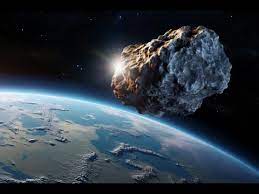Blog Credit: Trupti Thakur
Image Courtesy: Google
HelioLinC: A Novel Approach to the Minor Planet Linking Problem
We present HelioLinC, a novel approach to the minor planet linking problem. Our heliocentric transformation-and-propagation algorithm clusters tracklets at common epochs, allowing for the efficient identification of tracklets that represent the same minor planet. This algorithm scales as { \mathcal O }(N{log}N) with the number of tracklets N, a significant advance over standard methods, which scale as { \mathcal O }({N}3). This overcomes one of the primary computational bottlenecks faced by current and future asteroid surveys. We apply our algorithm to the Minor Planet Center’s Isolated Tracklet File, establishing orbits for more than 200,000 new minor planets. A detailed analysis of the influence of false detections on the efficiency of our approach, along with an examination of detection biases, will be presented in future work.
The field of astronomy is constantly evolving with new technologies and algorithms aiding in the discovery of celestial bodies. Recently, a team of researchers from the University of Washington developed a groundbreaking algorithm called HelioLinc3D. In its first test, this algorithm successfully identified a “potentially hazardous asteroid,” named 2022 SF289.
Discovering the Potentially Hazardous Asteroid
During the testing phase in Hawaii, the HelioLinc3D algorithm showcased its capabilities by discovering a “potentially hazardous” asteroid measuring an impressive 600 feet in length. While the asteroid poses no immediate risk to Earth, its identification is crucial for understanding celestial movements and potential threats.
The Vera C. Rubin Observatory
HelioLinc3D is destined for deployment at the Vera C. Rubin Observatory, located in Chile. The observatory, expected to commence operations in early 2025, is designed for mapping the Milky Way, exploring dark energy, dark matter, and enhancing asteroid discovery rates significantly.
Role of HelioLinc3D
At the Rubin Observatory, HelioLinc3D will be instrumental in sorting through vast datasets to detect asteroids effectively. One of its key capabilities is handling Rubin’s data, which includes observations that have been previously unusable by conventional algorithms due to insufficient observations.
Overcoming Conventional Challenges
A major challenge faced by conventional algorithms in discovering asteroids like 2022 SF289 was the lack of adequate observations. Although this asteroid had been observed on multiple occasions, the inability to capture four observations on a single night hindered its proper identification. HelioLinc3D addressed this challenge by combining the available observations, leading to its successful detection.
Close Approach to Earth’s Orbit
Scientific analysis determined that asteroid 2022 SF289 will come within 140,000 miles of Earth’s orbit, positioning it closer than the moon. Despite its proximity, scientists have concluded that it poses no immediate threat to our planet.
Future Prospects
The discovery of 2022 SF289 serves as a preview of what is to come once HelioLinc3D becomes operational at the Vera C. Rubin Observatory. The algorithm’s capabilities are expected to enable the discovery of similar objects every night, fostering advancements in data-intensive astronomy.
More About 2022 SF289
A 600-foot asteroid was detected near Earth after being hidden in plain sight for a year, according to reports this week. The space rock can be compared to having a size as tall as the Washington Monument and the Singapore Flyer (Ferris wheel).
However, experts believe that it poses no threat to our planet in the distant future since estimates suggest that its trajectory will not make a direct impact on Earth for now.
Regardless, space authorities consider the giant celestial object to be a potentially hazardous asteroid (PHA), a term used by the National Aeronautics and Space Administration and other space agencies to designate an asteroid with the potential to cause significant damage, should it hit our planet.
In recent years, NASA has led programs, including planetary defense systems, to address the threat posed by asteroids, especially the planet-killing ones.
2022 SF289 is categorized as a PHA since not only it is relatively close to the Blue Planet but is also 180 meters or 600 feet wide.
In September 2022, the asteroid made a close approach to our planet, flying within 4.5 million miles (7.2 million kilometers) from us, according to NASA, as cited Live Science, which reported that astronomers worldwide initially failed to detect the space object since the large rock was covered by starlight within the Milky Way galaxy.
In a news release earlier this week, researchers from the University of Washington said that a new algorithm designed to detect near-Earth asteroids or NEAs have discovered its first PHA such as Asteroid 2022 SF289, UW News reported on Monday, July 31.
Potentially Hazardous Asteroid
Potentially hazardous asteroids (PHAs) are categorized based on their potential to make threatening close approaches to our planet. All asteroids with a minimum orbital distance of 0.05 astronomical units or less and an absolute magnitude of 22.0 or less are designated as PHAs, according to NASA’s Center for Near Earth Object Studies.
While these asteroids are mostly thousands or millions of miles away from Earth, astronomers still consider them to be potentially dangerous. In addition, these distances are relatively ‘close’ in astronomical terms. Furthermore, asteroids must also be large enough to be considered as ‘potentially dangerous.’
Can We Stop Asteroids?
It has been established that 2022 SF289 does not pose a threat to Earth at this moment. Yet, there are still asteroids or comets within our Solar System, including in the Asteroid Belt, and potentially outside our cosmic neighborhood that can hit Earth with tremendous force.
Amid this imminent threat, NASA has pioneered planetary defense systems such as the use of kinetic force to deflect an approaching asteroid. One such measure is the “successful” Double Asteroid Redirection Test (DART), wherein in September 2022 was able to impact Dimorphos, a natural satellite of the asteroid Didymos.
Despite the announced feat, NASA, and other space agencies, as well as their collaborators, are still working on the kinetic impactor technology and other potential means to stop a potentially dangerous asteroid, like the one that killed the dinosaurs 65 million years ago.
Blog By: Trupti Thakur

04
AugHelioLinc- 2022 SF289
Aug 04, 2023Recent Blog
When Monuments Delisted !!Apr 08, 2025
The Frontier Technologies Readiness IndexApr 07, 2025
Vikram 3201 & Kalpana 3201Apr 04, 2025
The Open Weight Language ModelApr 03, 2025
Asia Cup 2025Apr 02, 2025




